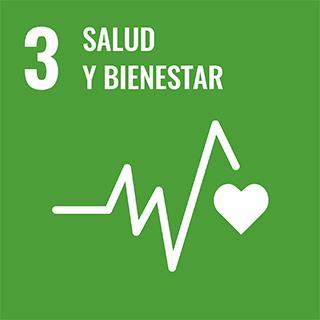
Indexed in
License and use
Impact on the Sustainable Development Goals (SDGs)

Analysis of institutional authors
González-Bodi SAuthorThe first wave of the COVID-19 epidemic in Spain was associated with early introductions and fast spread of a dominating genetic variant
Publicated to:Nature Genetics. 53 (10): 1405-1414 - 2021-10-01 53(10), DOI: 10.1038/s41588-021-00936-6
Authors: López MG; Chiner-Oms Á; García de Viedma D; Ruiz-Rodriguez P; Bracho MA; Cancino-Muñoz I; D’Auria G; de Marco G; García-González N; Goig GA; Gómez-Navarro I; Jiménez-Serrano S; Martinez-Priego L; Ruiz-Hueso P; Ruiz-Roldán L; Torres-Puente M; Alberola J; Albert E; Aranzamendi Zaldumbide M; Bea-Escudero MP; Boga JA; Bordoy AE; Canut-Blasco A; Carvajal A; Cilla Eguiluz G; Cordón Rodríguez ML; Costa-Alcalde JJ; de Toro M; de Toro Peinado I; del Pozo JL; Duchêne S; Fernández-Pinero J; Fuster Escrivá B; Gimeno Cardona C; González Galán V; Gonzalo Jiménez N; Hernáez Crespo S; Herranz M; Lepe JA; López-Causapé C; López-Hontangas JL; Martín V; Martró E; Milagro Beamonte A; Montes Ros M; Moreno-Muñoz R; Navarro D; Navarro-Marí JM; Not A; Oliver A; Palop-Borrás B; Parra Grande M; Pedrosa-Corral I; Pérez González MC; Pérez-Lago L; Pérez-Ruiz M; Piñeiro Vázquez L; Rabella N; Rezusta A; Robles Fonseca L; Rodríguez-Villodres Á; Sanbonmatsu-Gámez S; Sicilia J; Soriano A; Tirado Balaguer MD; Torres I; Tristancho A; Marimón JM; Pérez-Tur J; García de Viedma D; Catalán-Alonso P; Suárez González J; Muñoz P; Galán-Vendrell I; Ferrús-Abad ML; Carbó-Ramírez S; Nogueira JM; Camarena JJ; Martínez Expósito Ó; Antona Urieta N; Castelló-Abietar C; Rojo-Alba S; Álvarez-Argüelles ME; Melón S; Antuori A; Fernández-Navarro A; Lecaroz Agara MC; Gómez-González C; Aguirre-Quiñonero A; López-Mirones JI; Fernández-Torres M; Almela-Ferrer MR; Fregeneda-Grandes JM; Argüello H
Affiliations
Abstract
The coronavirus disease 2019 (COVID-19) pandemic has affected the world radically since 2020. Spain was one of the European countries with the highest incidence during the first wave. As a part of a consortium to monitor and study the evolution of the epidemic, we sequenced 2,170 samples, diagnosed mostly before lockdown measures. Here, we identified at least 500 introductions from multiple international sources and documented the early rise of two dominant Spanish epidemic clades (SECs), probably amplified by superspreading events. Both SECs were related closely to the initial Asian variants of SARS-CoV-2 and spread widely across Spain. We inferred a substantial reduction in the effective reproductive number of both SECs due to public-health interventions (Re < 1), also reflected in the replacement of SECs by a new variant over the summer of 2020. In summary, we reveal a notable difference in the initial genetic makeup of SARS-CoV-2 in Spain compared with other European countries and show evidence to support the effectiveness of lockdown measures in controlling virus spread, even for the most successful genetic variants.
Keywords
Quality index
Bibliometric impact. Analysis of the contribution and dissemination channel
The work has been published in the journal Nature Genetics due to its progression and the good impact it has achieved in recent years, according to the agency WoS (JCR), it has become a reference in its field. In the year of publication of the work, 2021, it was in position 2/175, thus managing to position itself as a Q1 (Primer Cuartil), in the category Genetics & Heredity. Notably, the journal is positioned above the 90th percentile.
From a relative perspective, and based on the normalized impact indicator calculated from the Field Citation Ratio (FCR) of the Dimensions source, it yields a value of: 10.39, which indicates that, compared to works in the same discipline and in the same year of publication, it ranks as a work cited above average. (source consulted: Dimensions Jun 2025)
Specifically, and according to different indexing agencies, this work has accumulated citations as of 2025-06-10, the following number of citations:
- Open Alex: 49
- OpenCitations: 35
Impact and social visibility
Leadership analysis of institutional authors
This work has been carried out with international collaboration, specifically with researchers from: Australia; Granada; Switzerland.
